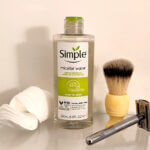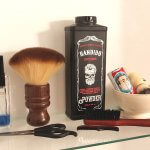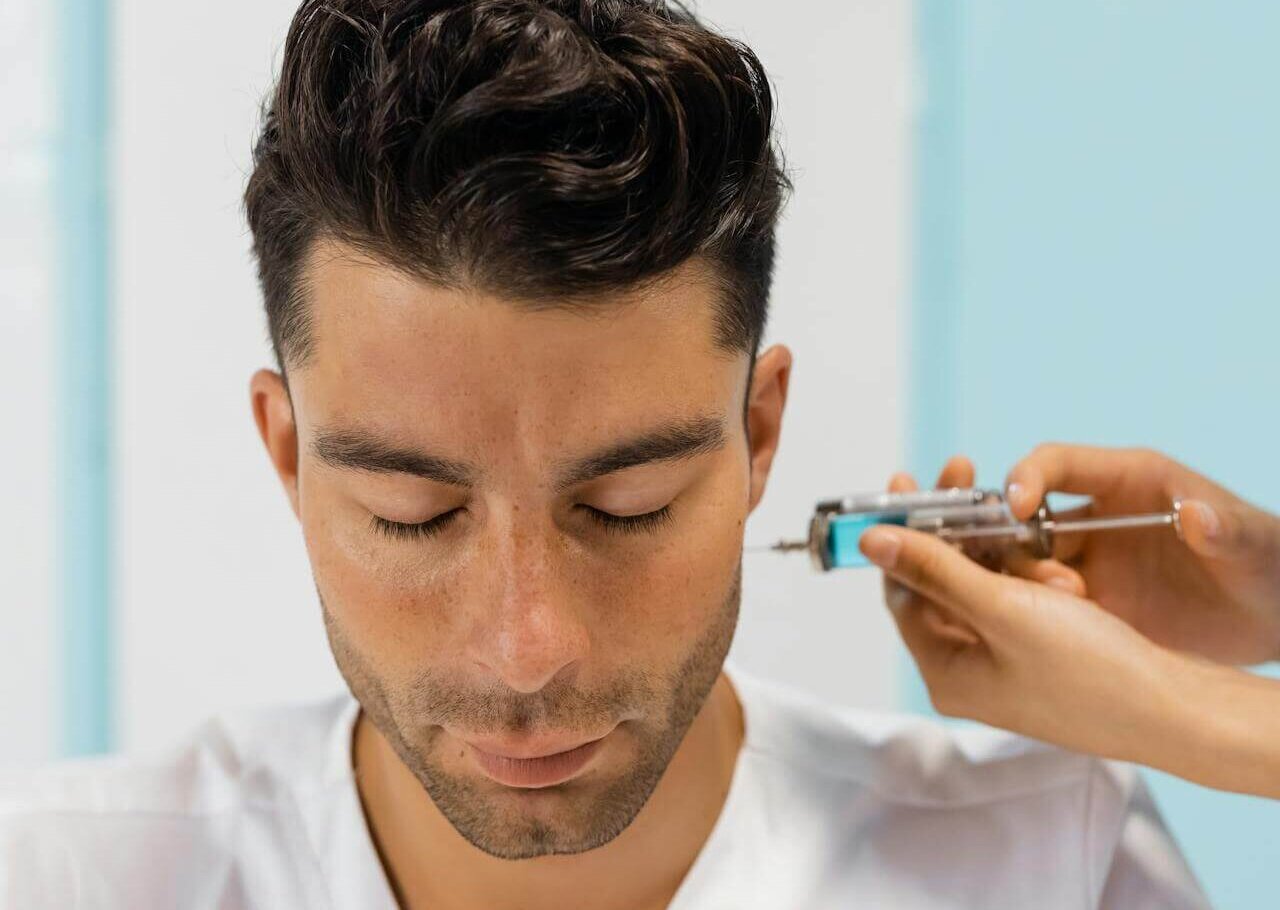 Source: Pexels
Source: PexelsSick of sagging jowls and tired-looking eyes? Discover which cosmetic procedures do and don’t work for men, whether surgery or noninvasive treatments. In this guide, I share my research into antiaging options—from facelifts to fillers—so you know what’s available and what’s worth it.
As a man, I don’t plan on undergoing any cosmetic procedures. On the other hand, no amount of aging is going to make me appear rugged—just old and worn out.
I’ve found that pulling my cheeks toward my ears does lend a fresher appearance. Perhaps a snip here or there could tighten my jowls; a full beard wouldn’t help now that most of my whiskers are white. And maybe something could be done to make my eyes seem less tired.
It wouldn’t be about chasing youth, but looking as though I have a future. Why let gravity get in the way of career and romantic ambitions?
So yes—I’ve done my research. Facelifts, thread lifts, resurfacing, fillers, microneedling. I’ve even tried at-home devices.
If you’re worried that your aging face is spoiling your prospects, here are my findings.
Cosmetic Surgery
As men, surgery is the first thing we think of when considering cosmetic procedures; women seem to be much better informed. Facelifts, brow lifts, eyelid surgery, and neck lifts promise to tighten sagging tissue and restore contour. But it comes at a high price in terms of cost and risk.
If you’re willing and have the budget, here are the possibilities.
The Facelift
According to surgeons, if you undergo your first facelift while your skin is still relatively elastic, results can last up to 20 years, meaning you’ll need fewer repeat operations during the course of your life.
It therefore makes sense to get your first facelift before the age of 50.
A full facelift—or a rhytidectomy in medical jargon—includes several procedures starting with the mid-facelift.
What a Mid-Facelift Entails
After making incisions from the temples to the earlobes, the surgeon loosens the cheek skin to the nasolabial folds to expose underlying tissue, tendons, and muscles. These are pulled together and trimmed to eliminate sagging jowls, leaving the cheeks and jawline smooth and firm.
Why a Mid-Facelift Can Leave a Mask-Like Effect
In the old days, a facelift involved nothing more than superficially stretching and tightening the skin, which always resulted in a mask-like appearance with misplaced mouth corners and a glassy complexion.
Although surgeons don’t stretch skin nowadays, the healing process does cause skin tissue to shrink, which has the same effect. This isn’t visibly noticeable if you undergo a facelift only once, but it can become obvious after a second or third.
Forehead, Neck, Chin, Eyes, and Mouth
Browplasty
A brow or forehead lift is called browplasty surgery. It’s usually done endoscopically to minimize scarring (minimal incision technique).
What a Browplasty Entails
First, the surgeon makes four to six incisions about three-quarters of an inch above the hairline. Using an endoscopic instrument, he detaches tissue from the bone and pulls it up toward the scalp. The muscle at the bridge of the nose is then severed to weaken the forehead muscles, which prevents frowning.
But this isn’t always ideal for men.
It raises the hairline by about a quarter of an inch, which isn’t good if you already have a high forehead, nor if you’re battling a receding hairline.
The conventional method of opening up the forehead avoids this and results last longer than with the endoscopic technique. But scarring is obvious, which is impractical for bald men.
Aesthetically, a browplasty has a similar effect to Botox, which numbs the forehead and glabella (the area where frown lines appear), but results are more permanent and natural-looking. On the other hand, it can leave a mask-like appearance if carried out more than once or twice.
Chin and Neck
A chin tuck and neck lift firm sagging tissue and are usually performed simultaneously with a mid-facelift.
Eyes
Blepharoplasty refers to cosmetic surgery of the eyes. It erases under-eye circles and reshapes the upper and lower eyelids by removing excess fat and skin.
Incisions are mostly along the lid creases, where stitching is practically invisible.
Mouth
A mid-facelift automatically counteracts the appearance of downturned mouth corners. But too many facelifts would exaggerate the effect.
For men prone to wrinkling along the upper lip line, either grow a mustache or consider a noninvasive cosmetic procedure. Depending on severity, options include microneedling, injectables, laser resurfacing, and chemical peels—more on that in a moment.
The Thread Lift
Sometimes called the “lunchtime facelift,” a thread lift is a minimally invasive procedure. It uses barbed threads inserted beneath the skin that are then tightened to lift sagging tissue.
Over time, the threads dissolve, having stimulated new collagen for added firmness.
The result is a subtle lift of the cheeks, jawline, or brows that lasts 1-3 years depending on skin quality and lifestyle. It’s less dramatic than surgery, but more noticeable than injectables—we’ll come to these later.
Possible side effects include bruising, asymmetry, and thread migration.
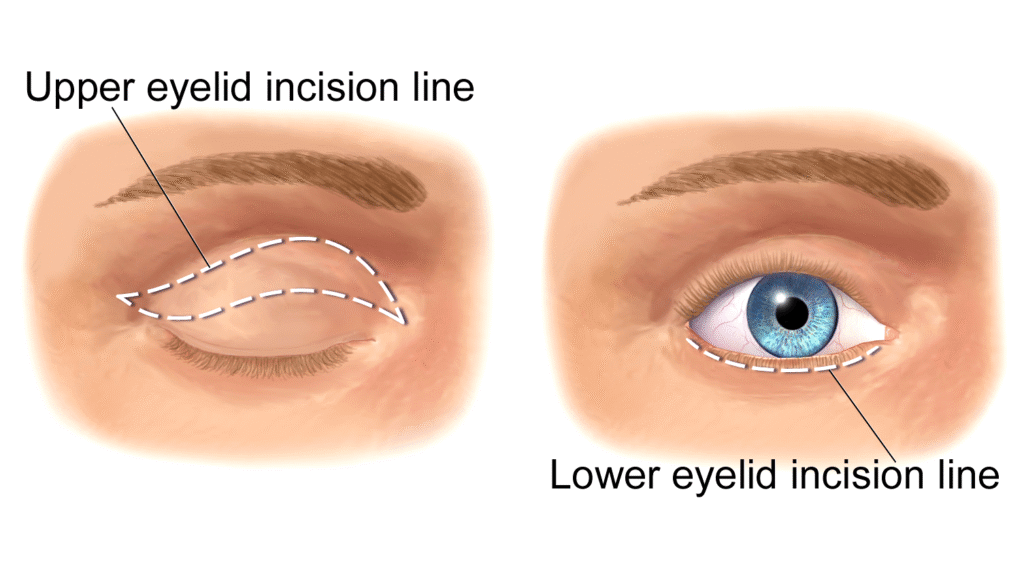
Noninvasive Cosmetic Procedures
Surgery may offer relative permanence, but it carries more risk and longer recovery times. And let’s face it, men can’t realistically wear makeup while healing, nor use it to conceal anomalies and scarring if things go wrong.
For men, cosmetic procedures need to be quick and low risk, with less dramatic results—you don’t want people immediately noticing you’ve had work.
Noninvasive treatments don’t involve a scalpel, but still restore skin quality while, in some cases, minimally improving facial contours.
Resurfacing
The main objective of resurfacing is to improve skin texture and erase wrinkles and age spots.
There are two procedures: chemical and laser. Both have a sloughing effect to encourage skin renewal, and both ablate tissue to stimulate collagen production, which gives a plumper, smoother appearance.
Chemical Resurfacing
Countless chemicals of varying strengths are used in resurfacing procedures, depending on what is to be treated.
The retinoic peel, for example, aids scar removal, while a beta hydroxy peel can help acne patients. This could refer to medical-grade concentrations or milder formulas for home use. Retinoic acid, for example, is available as prescription-strength tretinoin or over-the-counter retinal. A well-known beta hydroxy product is salicylic acid, which you’ll find in drugstore acne treatments and callus removers.
But in skin rejuvenating procedures we’re looking at the phenol peel and the “blue peel.” These are much more aggressive and strictly for professional use.
The Phenol Peel
The phenol peel is the strongest available and only necessary if wrinkles are very deep. It requires a general anesthetic, and the healing process is painful.
Fortunately, a single treatment session is usually enough for desired results.
Formulas have improved over the years, but be warned—the phenol peel can still cause severe scarring, trigger cardiac arrest, and damage the circulatory system, kidneys, and liver. It may also leave the skin sensitive to light and prone to sunburn.
It’s most commonly used to remove wrinkles from areas that cannot be treated with a scalpel, like the lip contour. When treating the whole face, it may be more dangerous than surgery.
The “Blue Peel”
Trichloroacetic acid (TCA) is milder than the phenol peel, and suitable for removing fine lines and age spots.
It literally stains the skin blue, hence its moniker “blue peel.” But within two days, the face sheds its tinted layer, and a process of regeneration begins. This takes about two weeks.
Laser Resurfacing
Not only do lasers remove damaged outer cells.Basically, when struck by a laser beam, collagen fibers contract by about a third of their length. This tightens the skin, which improves contours. In the weeks that follow, the healing response stimulates new collagen, resulting in enhanced texture and elasticity.
Laser technology continues to advance. Currently, you can expect treatment with an Er:YAG laser to iron out wrinkles, sometimes combined with the Nd:YAG wavelength, which can remove tattoos and broken capillaries.
These are gentler than CO₂ lasers, ablating tissue with less thermal damage. Healing is faster, and the risk of scarring or hyperpigmentation is lower.
Among the major cosmetic procedures discussed in this post, this is probably the most practical for men.
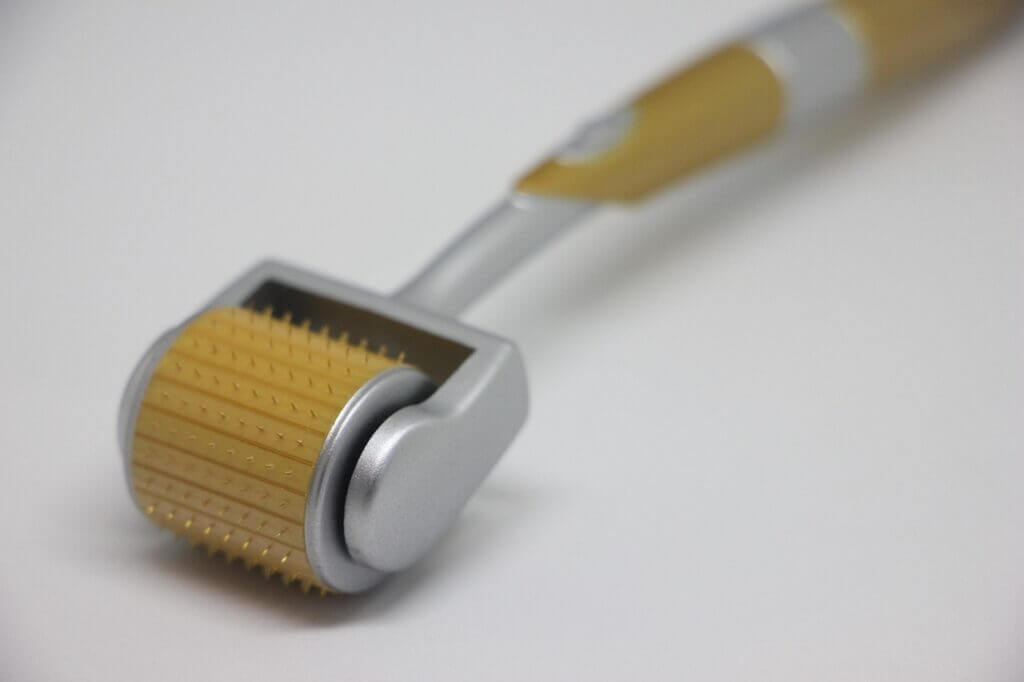
Noninvasive Lunchtime Procedures
The term “lunchtime procedure” suggests low-risk and zero downtime. It shouldn’t be taken literally.
Injectables, for example, can leave swelling or bruising, lasting several days. Microneedling causes redness and sensitivity that lingers for 24-48 hours, sometimes longer if combined with radiofrequency.
Men not wishing to plublicize their cosmetic procedures should plan at least a few days off after treatment.
Here’s a list of the most popular procedures and what you can expect.
- Botox injections. We’ve all heard of this. Derived from botulinum toxin to temporarily relax muscles, it softens dynamic wrinkles like crow’s feet and frown lines.
- Dermal fillers (or injectables) restore volume in the cheeks, lips, jawline, and under‑eye hollows. There are many types, ranging from hyaluronic acid to collagen stimulators for a longer-lasting effect.
- Chemical peels (light/medium). Designed to exfoliate outer cells, brighten the skin, and reduce fine lines, these are milder than the peels discussed above.
- Microdermabrasion. Using a spray of fine crystals or a diamond-tipped wand, this buffs away dead skin cells to improve texture and tone.
- Microneedling using a roller with spikes of up to 2.0 mm—or automated pens—stimulates collagen for elasticity and scar reduction.
- Non-ablative laser treatments improve pigment disorders, vascular or inflammatory redness, and mild wrinkles without removing tissue.
- IPL (intense pulsed light) targets sun damage, broken capillaries, or uneven skin tone.
- Radiofrequency skin tightening stimulates collagen with heat for firmer contours.
These convenient treatments are worth experimenting with before venturing into surgery or deeper resurfacing.
At-Home Cosmetic “Procedures”
The well-groomed man uses chemical exfoliants containing substances like glycolic or salicylic acid regularly. These aren’t cosmetic procedures; they’re topical treatments. Only high‑strength peels in clinical settings cross into procedural territory.
And I think the same applies to at-home cosmetic devices.
Men’s skin is thicker and often less responsive to superficial treatments. That’s why most at‑home cosmetic tools—however advanced they sound—don’t make a perceptible difference.
I’ve tried the following two, which I used over a couple of years.
A Microneedling Dermaroller
These use tiny spikes (usually 0.25–0.5 mm at home) to puncture the skin and stimulate collagen. In theory, they improve texture and elasticity. In practice, they cause mild redness and a fleeting sense of “doing something” with no visible change.
Even as hair growth stimulators, they don’t reach the depth needed to activate follicles, whether of the face or scalp. But they do create micro-channels that may improve product absorption, for example minoxidil for baldness or skincare serums.
Radiofrequency and Microcurrent Devices
Marketed as noninvasive “sculptors,” these at-home devices claim to tighten contours and energize facial muscles using heat and electrical pulses. But for men’s skin, which is denser and resists surface stimulation, the effect is negligible.
If you’re considering a cosmetic procedure, get it done professionally. And whatever you choose, remember: a regular skincare routine sustains results, making further procedures unnecessary.
© 2025 J. Richardson
Related Posts
Disclaimer
The information provided by The Neat and Tidy Man (“we,” “us,” or “our”) on theneatandtidyman.com (the “site”) is for general informational purposes only. While we endeavor to keep the information up to date and correct, we make no representation or warranty of any kind, express or implied, regarding the completeness, accuracy, reliability, suitability, adequacy, validity, or availability of any information on the site. Under no circumstance shall we have any liability to you for any loss or damage of any kind incurred as a result of the use of the site or reliance on any information provided on the site. Your use of the site and your reliance on any information on the site is solely at your own risk.

